Newsletter – February 2008
|
Calumet Heritage Partnership To identify, preserve and reclaim the natural, historical and recreational heritage of the Calumet region of Illinois and Indiana 13300 S. Baltimore, Chicago, Illinois 60633 (773) 646-0436 www.calumetheritage.org |
|
The next monthly meeting of the Calumet Heritage Partnership will be held – I’M DREAMING OF A WHITE VALENTINE’S DAY: When high snowfalls and low temperatures start to turn coffee pot climate conversations from global warming to the coming ice age, a good heritage partner runs to the historical record to see what’s up. Certainly, one element of regional heritage is snow – snow that builds to epic heights alongside roads and in regional memory. But an excellent place to get into the record is at the National Oceanic and Atmospheric Administration’s National Weather Service Chicago Office. Turns out that the most frequent snowfall amount on Valentine’s Day is none (half of all the days for which records were kept.) On the other hand, it did snow more than eight inches back in 1990. Those who are thinking about what footwear to don for the monthly meeting on the 21st should bear in mind that it rained more than three inches in most of Illinois on that date just ten years ago. For more of this sort of thing, check out http://www.weather.gov/climate/local_data.php?wfo=lot. Here’s another way to use the historical resources of the region. Go to the Industrial Heritage Archives of the Calumet Region and search on the word “snow”. Among other things, you’ll get this great image of workers digging out of the snow at Pullman in 1890. It’s on loan to the Industrial Heritage Archives collection of the Pullman Museum from the collection of Paul Petraitis, and you can find it here: http://www.pullman-museum.org/cgi-bin/pvm/mainRecordDisplayXML.pl?recordid=10563. Consider the role of the Calumet region in sustaining the salt supply of the metropolitan region. News reports say that the city of Chicago’s supply, which arrives by barge to a large terminal on the Calumet River, should be adequate to meet even this snowy year’s needs. But other communities are watching nervously as a supply of Morton Salt makes its way up the icy Illinois River from Louisiana. Will it arrive on time for Gurnee, McHenry, and other points north? The hope, at least, is that the barge will not meet the fate of the Schooner Brooklyn, “cargo salt, struck an obstruction and sunk at Chicago” in September, 1869, according to a list of marine disasters recorded in that year and placed online by an Ontario public library. (http://www.hhpl.on.ca/GreatLakes/Documents/ShipLists/Halls1869/default.asp?ID=c012 ) CALUMET HERITAGE CONFERENCE PLANS: Keep Saturday, October 18 free: it looks like this will be the date of our Annual Conference at Indiana University Northwest in Gary. Thanks to Steve McShane, Archivist/Curator of the Calumet Regional Archives, for coordinating local arrangements. GREEN INFRASTRUCTURE: The Chicago Regional Biodiversity Council, the grand coalition of museums, park districts, schools, open space organizations and others dedicated to preserving and enhancing the splendid resources of the Chicago region has prepared an intriguing “Green Infrastructure Vision.” It’s not a plan, but it is a strong suggestion as to what can still be done in the metropolitan area to secure open space while still leaving the built-up world of city and suburban life plenty of room to develop. The map that covers the Calumet region may be found at http://www.cmap.illinois.gov/uploadedFiles/archives/nipc/environment/sustainable/Indiana_Resource_Rich_Protection_Areas_Map.pdf. I highly suggest you use the “zoom” tool and think about specific “recommended resource protection areas”. (The form of the protection nor the type of ownership is not specified.) What would it take to protect these areas in the Calumet region? Is there value in a “big thinking” map like this? Does it play a part in a possible Heritage Corridor? NEW BOARD OF DIRECTORS: Congratulations to the newly elected 2008 Board of Directors: Mark Bouman, President; Stephen McShane, Vice-President; David Klein, Treasurer; Marian Byrnes, Secretary; Bob Bionaz; Robert Kelliher; Mike Longan; Bill Peterman; Richard Lytle; Sherry Meyer; Rod Sellers; Tom Shepherd. THANK YOU MEMBERS!: Last month we sent a little reminder note about your CHP membership. Thanks to the many who responded! CHP memberships are for the calendar year. BEHIND THE SCENES: Lots of time has been spent in the past month in thinking further on how best to build a collection; on securing regional memorabilia; on putting the collected blueprints to work for researchers; on figuring out how to move large equipment; on what it all means for us as a hardy band of volunteers. We hope to report on specific “done deals” as they occur rather than speculate about what could or could not happen. But let’s be clear that there have been some spectacular examples of regional citizenship in this group in the past month, and we note especially this month’s contributions by Kate Corcoran, Frank Beberdick, Rod Sellers, Mike Wagenbach, Steve McShane, Linda Bullen, and Marian Byrnes. A VIRTUAL AND AN ACTUAL NEWSLETTER: This newsletter is peppered with references to web sites and online collections. That’s by design: so many of the resources now available to us are to be found in wonderful online collections, and part of the role we can play here is to point you in their direction. At the same time, we’re very aware that not everyone has or wants access to the web. That’s why we keep mailing you a hard copy of this newsletter. And that would flat out not happen were it not for the dedicated work of Marian Byrnes in getting it to you. Thanks, Marian! Should you ever want to see a “hard copy” example of what these web sites are about, feel free to shoot me (Mark Bouman) a call at 773 995 2187, and I can work to get you one. |


